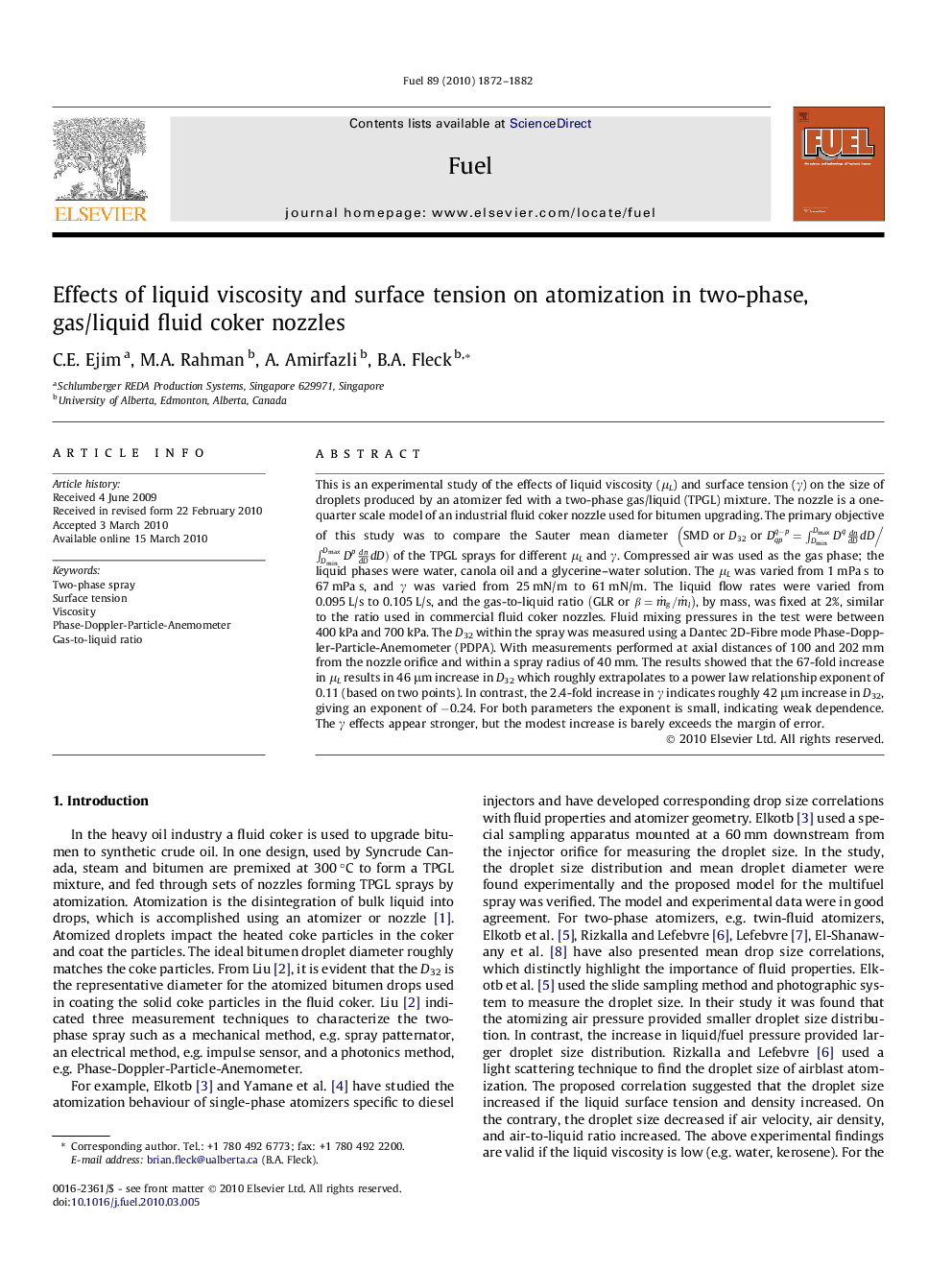| Article ID | Journal | Published Year | Pages | File Type |
|---|---|---|---|---|
| 207155 | Fuel | 2010 | 11 Pages |
This is an experimental study of the effects of liquid viscosity (μL) and surface tension (γ ) on the size of droplets produced by an atomizer fed with a two-phase gas/liquid (TPGL) mixture. The nozzle is a one-quarter scale model of an industrial fluid coker nozzle used for bitumen upgrading. The primary objective of this study was to compare the Sauter mean diameter SMDorD32orDqpq-p=∫DminDmaxDqdndDdD∫DminDmaxDpdndDdD of the TPGL sprays for different μL and γ. Compressed air was used as the gas phase; the liquid phases were water, canola oil and a glycerine–water solution. The μL was varied from 1 mPa s to 67 mPa s, and γ was varied from 25 mN/m to 61 mN/m. The liquid flow rates were varied from 0.095 L/s to 0.105 L/s, and the gas-to-liquid ratio GLRorβ=m˙g/m˙l, by mass, was fixed at 2%, similar to the ratio used in commercial fluid coker nozzles. Fluid mixing pressures in the test were between 400 kPa and 700 kPa. The D32 within the spray was measured using a Dantec 2D-Fibre mode Phase-Doppler-Particle-Anemometer (PDPA). With measurements performed at axial distances of 100 and 202 mm from the nozzle orifice and within a spray radius of 40 mm. The results showed that the 67-fold increase in μL results in 46 μm increase in D32 which roughly extrapolates to a power law relationship exponent of 0.11 (based on two points). In contrast, the 2.4-fold increase in γ indicates roughly 42 μm increase in D32, giving an exponent of −0.24. For both parameters the exponent is small, indicating weak dependence. The γ effects appear stronger, but the modest increase is barely exceeds the margin of error.
